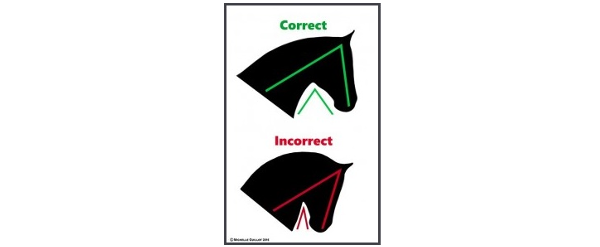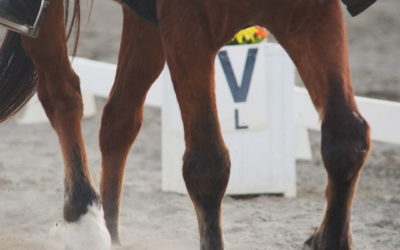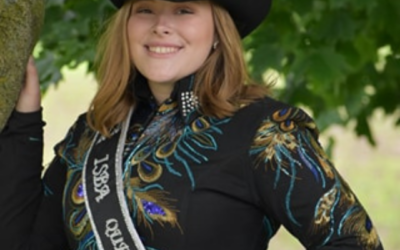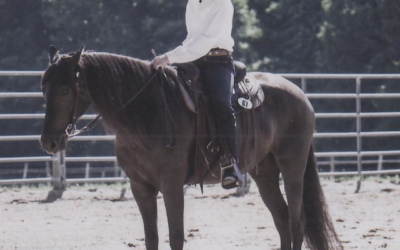The inception of western dressage was met with great fanfare and excitement just 5 or 6 years ago and it continues to grow and build. We have seen the excitement of people competing at a World Show, winning World Championships, and being able to show from home through virtual showing or enjoying the camaraderie at a nearby schooling show. These are no doubt exciting times.
Western Dressage is all about Inclusion
With gaining popularity and the rise of competition we see people looking to find examples of good or bad. Interpretations of what a Western Dressage horse are varied. Many long time professionals in the working ranch horse world have some solid examples of western dressage horses. We must remember that western dressage is all about inclusion. Western dressage has Paint Horses, Quarter Horses, Morgans, Arabs, Friesians, Mustangs, Gaited horses, Mules, Drafts, and All-American horses of mixed heritage.
The question is often put to professionals and judges of western dressage – what is the look I need to have to win? The best answer that we at NAWD can give you is —- the look that is right for your horse based on that moment in time. In truth, the western dressage horse comes in all shapes and sizes and abilities and there is not a perfect look …. However, there are universal correct biomechanics that are relevant to protecting the welfare of the horse. As western dressage continues to develop we have noticed that some folks think that a horse held in tight check through the reins may be viewed as being “collected,” “on the bit,” and “in a working frame” …. But in actuality many of these horses are being pulled behind the vertical with the reins; thus closing the angle of the throat-latch and constricting breathing while affecting the freedom and relaxed movement sought in the correct western dressage horse. Scientific evidence has proven that when a horse positions his head and neck with the frontal plane of the face (drop a visual from the eye to the nostril); he loses 10-12% of his breathing capacity. (To read some of the scientific research – visit the International Society for Equitation Science HERE).
Inline with North American Western Dressage’s continued efforts to educate, promote competition opportunities, and to protect the welfare of the horse, our judging and education team are standing up for the welfare of the horse and as of February 1, 2016, we have instructed our judges to award a score of no greater than a 4 (insufficient) when a horse is ridden behind the vertical with no attempt made by the rider to correct this issue. We welcome you to read more at the following link of guidelines being given to North American Western Dressage Licensed judges who judge in NAWD managed competitions… and we welcome all other competitive organizations who want to use this guidance as a model for protecting the welfare of the horse — more details on this guidance can be found HERE.
Look at the width of the opening between the horse’s jaw line and the underneath side of its neck: the inverted “V” is much easier to see than trying to see how “curved” the top of the neck is (whether or not the horse is flexing at the poll, or at the 3rd or 4th vertebrae), or even, if the horse’s nose would come in front of or behind the imaginary vertical line at a 90 degree angle from the ground. Riding a horse behind the vertical IS WRONG in any discipline.
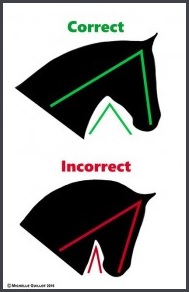
Quite simply put….riding Behind the Vertical is detrimental to the development, welfare, longevity and nobility of the horse –
this is a positon we have always held at North American Western Dressage and we take a firm stance against it.
Noted Equine Professionals such as John Saint Ryan and Andrew McLean Ph.D. have shared the following regarding this important issue of Behind the Vertical:
 “In times gone by when the horse was used for work, the care was often better. Because the people using the horse knew how their actions would have great consequences, to the good or the bad. In todays world that care may get overlooked because of the human. Why would this be? Some people will suggest the human ego, ambition, drive or whatever. But the bottom line is that we must educate ourselves through proven practice, research and our own actions to find and encourage the best way. Current research shows the posture of ‘BTV’ is considered detrimental to the gymnastic development of the horse. The challenge is to commit this to practice. I applaud the NAWD in their effort to educate those involved with horses to understand and appreciate how we as humans have a great responsibility with regard to the care of these animals.”
“In times gone by when the horse was used for work, the care was often better. Because the people using the horse knew how their actions would have great consequences, to the good or the bad. In todays world that care may get overlooked because of the human. Why would this be? Some people will suggest the human ego, ambition, drive or whatever. But the bottom line is that we must educate ourselves through proven practice, research and our own actions to find and encourage the best way. Current research shows the posture of ‘BTV’ is considered detrimental to the gymnastic development of the horse. The challenge is to commit this to practice. I applaud the NAWD in their effort to educate those involved with horses to understand and appreciate how we as humans have a great responsibility with regard to the care of these animals.”
— John Saint Ryan (Doma Vaquera, Equestrian Clinician, and friend to Tom Dorrance and Ray Hunt)
 “Regarding the attachment about behind the vertical, if you look on the ISES website you’ll see that we have a few ‘Position Statements’ and one is on behind the vertical (I helped formulate them). There’s a lot of scientific back up – one point you could emphasise is that when horses are behind the vertical they are around 12% (I recall) restricted in breathing (See Zebisch et al., 2014 ). Great work…”
“Regarding the attachment about behind the vertical, if you look on the ISES website you’ll see that we have a few ‘Position Statements’ and one is on behind the vertical (I helped formulate them). There’s a lot of scientific back up – one point you could emphasise is that when horses are behind the vertical they are around 12% (I recall) restricted in breathing (See Zebisch et al., 2014 ). Great work…”
— Andrew McLean, Ph.D. (CEO, Equitation Science International)
